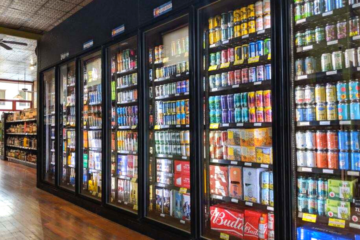History of English and Irish Beer.
Notes from the podcast:
Due to the danger of drinking water in the middle ages, beer was one of the most common drinks of the day, and it was enjoyed by all social classes. Beer was one of the best ways to stay hydrated without worrying about getting botulism.
Early Styles of UK Beers:
Before the use and understanding of hops, beers in the British Isles were more like herbal tea, with alcohol. The brewing process involved the use of botanicals as a way to bitter the beer, instead of the hops we use today. These beers did not last as long as those made with hops, and they also had fairly low ABV.
The preservative nature of hops:
In the middle ages, it was very common for every village/town to have their own brewery, lessening the need for preservatives in the beer. This meant that the preservative nature of hops did not become important until great Britain started engaging in colonialism and spreading the British flag around the globe.
IPAs and Bitters
The most famous style of beer to come out of the UK is the IPA, it is the most commonly consumed craft beer category in the world. Chris notes that while it is an acquired taste, most people in the Glenwood Springs area have already acquired the taste.
Similar to IPA, Bitters are very rich, hop-forward beers. You could consider Bitters pre-cursors to some popular american beers, such as Amber Ales.
Lagers v. Ales
There are many styles of beer in existence, but when you bring them down to their most simple categorizations, they can be separated into Lagers and Ales.
Lagers use a specific form of yeast that is bottom fermenting. Lagers ferment at much colder temperatures than ales, meaning they are more commonly brewed in colder climates, since they can be brewed all year round.
Ales use top fermenting yeast, which you could say makes them less crisp, more rustic, with a fruity character. Ales ferment at warmer temperatures, close to room temperature.
Porters and Stouts
The classic London-style porter has its roots in the class system. Think of a hypothetical situation where a brewer burns the malt, and instead of throwing away the batch, packages it anyways and serves it to the “Porters” aka those working in steerage or on the docks. What was originally an insult to the lower classes turned out to be a much-loved style of beer.
When the Irish laborers who were working in England brought porters back to Ireland, they made the beer their own. The queen dictated that brewers must use malted barley to make their beers, as the process of malting required a tax from the British government. Arthur Guinness wanted to avoid paying these taxes, and so he started brewing with un-malted grains. Thus the rise of the Dry Irish Stout.
There’s so much more to learn in this podcast! We hope you enjoy!
